Megha Desai, 36, a senior art director at a Mumbai-based branding studio, found her perfect monsoon escape not in a remote hill station, but in a glass-roofed coach on the Executive Vistadome AC (EV) compartment of the Dadar–Madgaon Janshatabdi Express, which runs daily. “You don’t need a five-star resort in the hills. Just book a Vistadome seat,” she says.
A train crossing the Western ghats
| Photo Credit:
KuntalSaha
In July 2024, during a break from back-to-back campaign shoots, Megha booked the Vistadome coach on a whim after seeing a friend’s Instagram stories of misty Konkan views. Securing the ticket — which cost her around ₹4,160 for a round trip — meant checking the Indian Railway Catering and Tourism Corporation (IRCTC) site daily, but the effort paid off. “The train was packed and everyone wanted that glass box view.” As the train rolled out of Mumbai and into the lush Western Ghats (the journey from Dadar to Madgaon takes around 11 hours and 20 minutes), Megha was glued to the panoramic windows. “It was just rivers overflowing, waterfalls crashing down rocks, and dense green cliffs draped in mist. I’ve flown to Goa plenty of times, but this was different.”
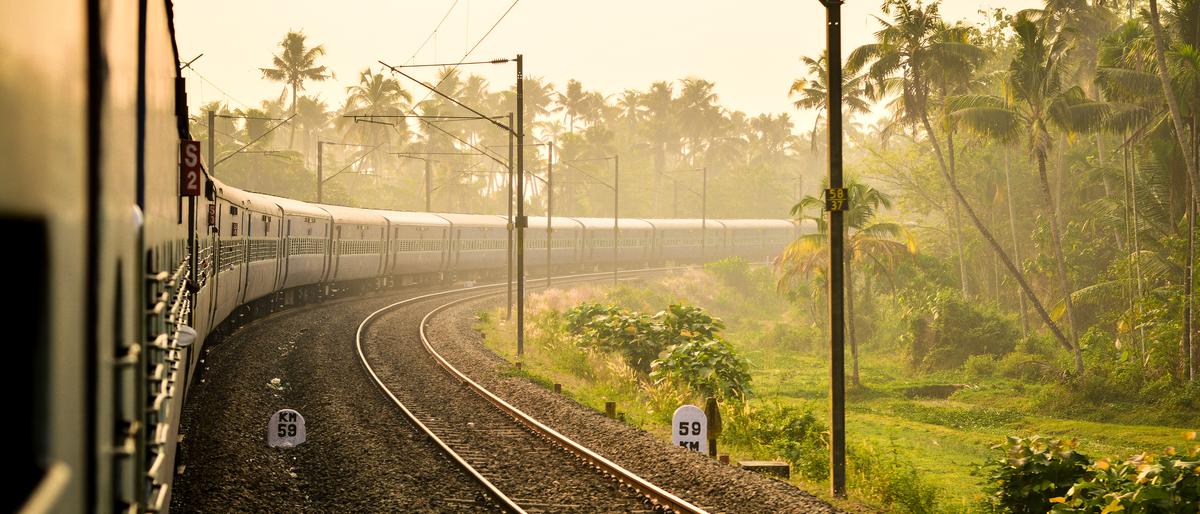
View of a train in the morning
| Photo Credit:
Karthicanand M S
The Vistadome coaches, which according to a video shared by the Ministry of Railways on X (formerly Twitter) in July 2024 number 111 in operation across India, available on select routes like Mumbai–Goa, Mumbai–Pune, and Bengaluru–Mangaluru, offer large windows, rear observation decks, and rotating seats — features that made it easy for Megha to soak in views from both sides. “Near Ratnagiri, the train slowed and there were three waterfalls visible at once. I couldn’t look away.”
Would she recommend it? “Absolutely. But book early,” she laughs. “I got lucky with a cancellation.” She also advises checking the Konkan Railway’s special monsoon timetable, as train speeds are often reduced.
Chugging along
There is something about monsoon train travel that feels really special. You are sitting by the window, chai in hand, as the world outside blurs into green hills, rushing waterfalls, and misty skies. Even the noisiest cities seem gentler behind rain-speckled glass.
It was this season that nudged Anand Ramaswamy, a 42-year-old product manager from Hyderabad, to take a quiet break in June aboard the Vistadome coach from Visakhapatnam to Araku Valley — a route that threads through the monsoon-soaked Eastern Ghats. After taking the overnight Godavari Express from Secunderabad to Vizag, he boarded the morning Vistadome service, drawn in by its promise of glass ceilings, rotating seats, and uninterrupted views of tunnels, waterfalls and deep green valleys. “You enter a tunnel, then burst out into fog or a cliff dripping with water, everyone just goes still,” he says.
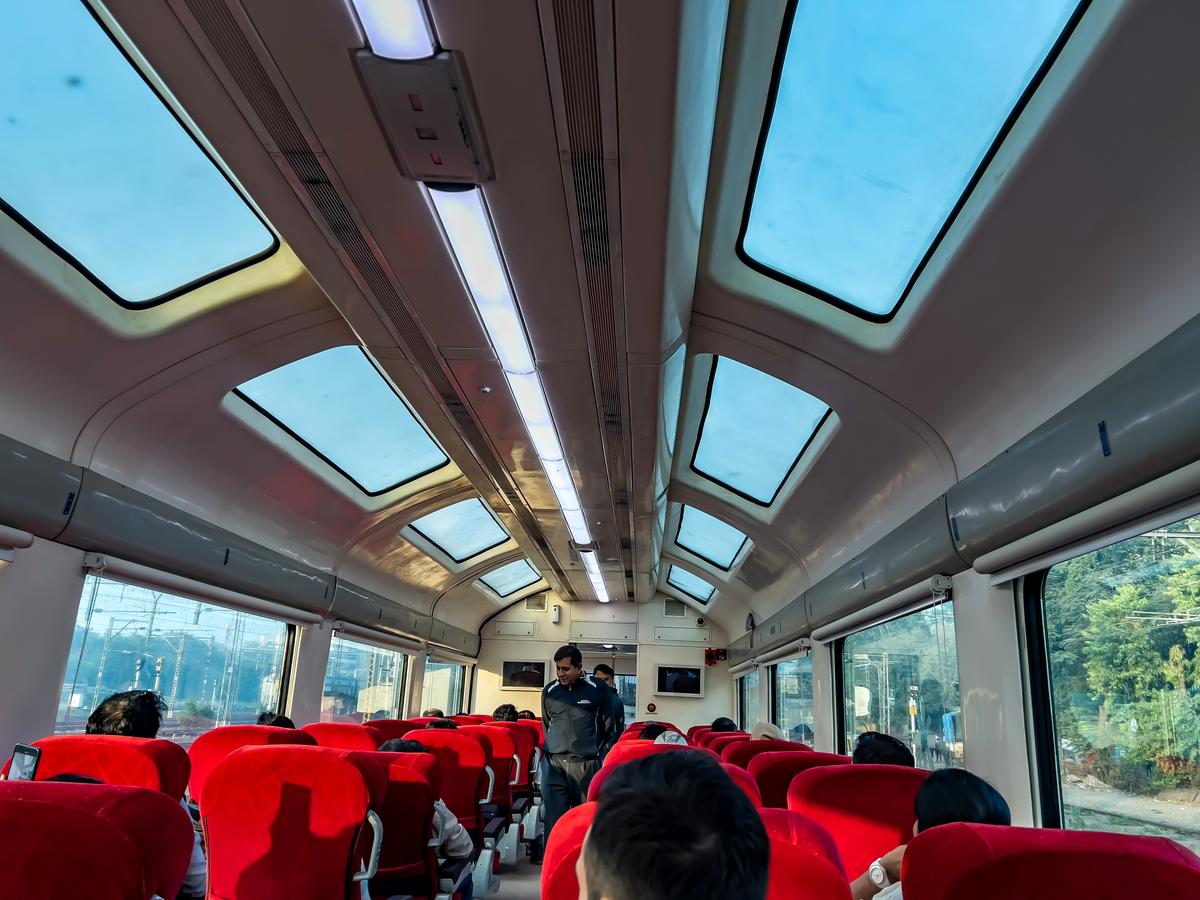
Vistadome coach interiors
| Photo Credit:
Dinesh Hukmani
In Araku, he checked into a coffee estate homestay, explored the Tribal Museum and Padmapuram Gardens, and spent the evening listening to the rain on a tin roof. “Coming from Hyderabad’s dry heat, it felt like I’d travelled two seasons away in a day,” he says. He returned the next evening, rested, and insists he would do it again. “It’s one of those rare Indian train rides where the journey really is the whole point.” Anand points out that the Vistadome coach is generally attached only for the onward journey from Visakhapatnam to Araku Valley. For the return trip, passengers must book a seat in a regular coach on a different train. He took the Kirandul Express, which departs later in the day. Departure from Visakhapatnam is around 6.45am or 6.50am, with arrival at Araku Valley around 10.55 am. According to the latest ticket prices listed on the IRCTC website, a one-way ticket in the Vistadome coach (EV class) from Visakhapatnam to Araku Valley costs approximately ₹735 to ₹750.
Travelling on India’s boutique trains during the monsoon — or really, any time — is far more than just getting from one place to another. It is slow travel blended with five-star comfort and cultural depth. Delhi-based independent journalist Shibani Bawa still recalls the surreal glamour of her seven-night journey aboard the Deccan Odyssey’s Maharashtra Splendour itinerary in 2016, which runs from October to April, beginning and ending in Mumbai, with stops at Nashik, Ellora Caves, Kolhapur, Goa, Sindhudurg, and Ratnagiri. “It was extremely well-maintained and truly luxurious,” she says. “The service was just fabulous — you could tell everything had been carefully thought through.”
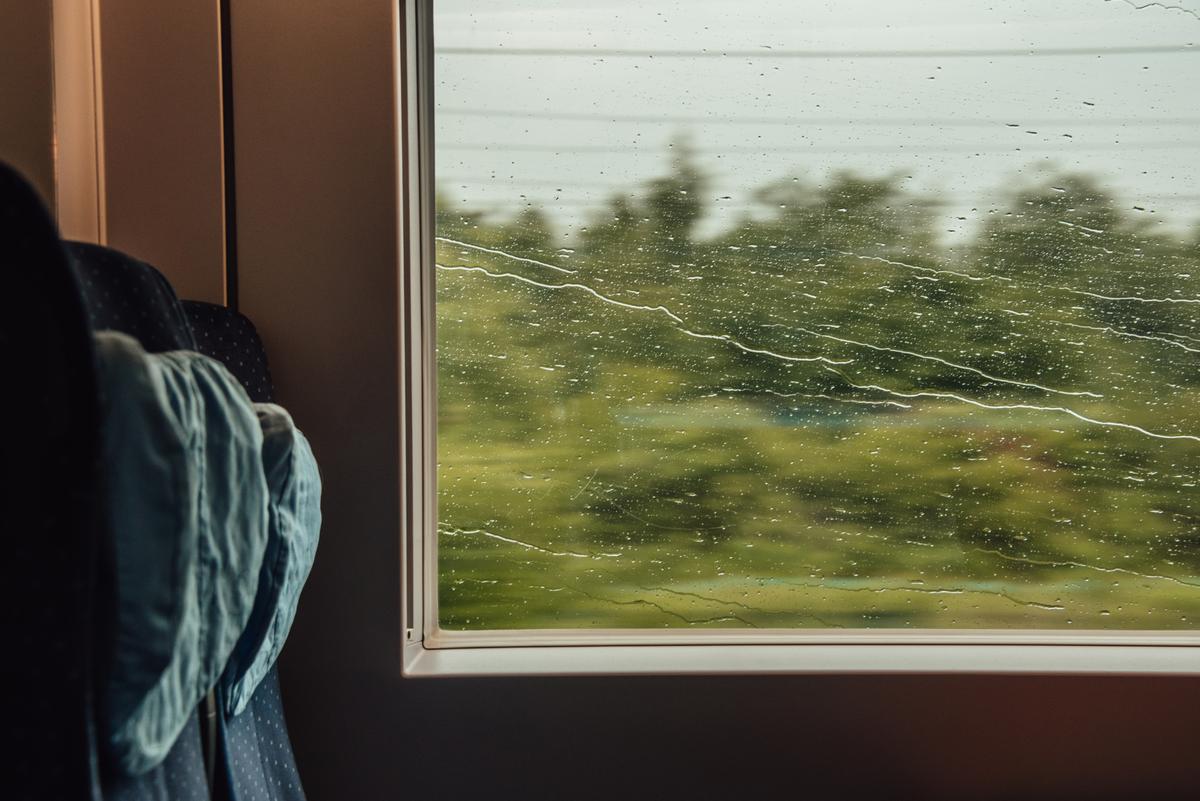
Rain splattered on a window
| Photo Credit:
MarioGuti
Ticket prices for the 2025–2026 season (as per deccan-odyssey-india.com) reflect the all-inclusive nature of the experience, from gourmet meals to guided sightseeing. A Deluxe Cabin for single occupancy costs approximately US$9,330 (around ₹7.74 lakh), while double occupancy is priced at US$13,300 (₹11.03 lakh). The Presidential Suite is offered at US$20,000 (₹16.60 lakh), regardless of single or double occupancy. The Maharashtra Splendour tour date for this year is September 20.
The train is all old-school elegance, with two dining cars serving plated meals on silverware. “For every meal, you can pick between Indian and western set menus, and even the western dishes are excellent. I even asked for the soup recipes,” she adds. A few off-board meals were also arranged, including lunch with the royal family in Sawantwadi. “It felt personal, not touristy.”
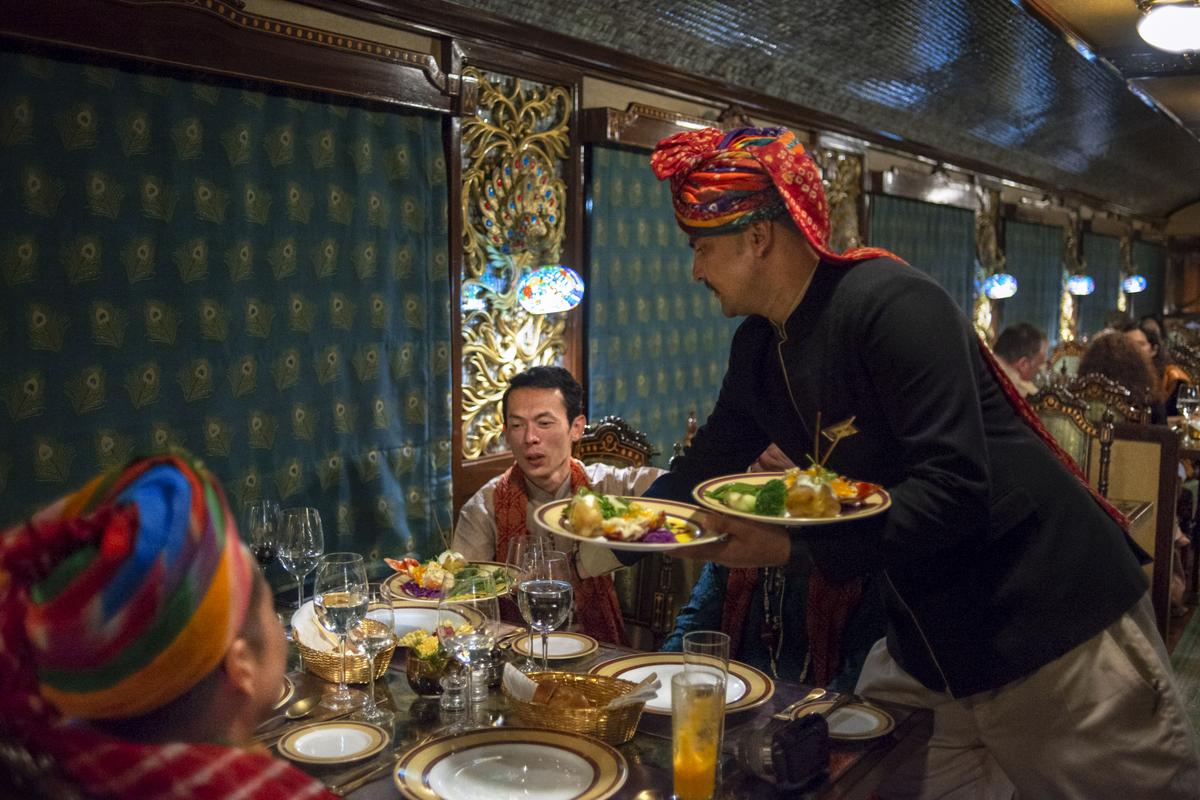
Food served aboard the Maharajas’ Express
| Photo Credit:
VW Pics
Though the days were indulgent, the nights were sometimes bumpy. “One night I genuinely thought I’d fall off the bed, it shook so much,” she laughs, noting that a later track upgrade likely fixed that.
The Deccan Odyssey would arrive at quieter platforms, greeted with garlands and music. “Each stop felt like an event,” she says. Sightseeing was thoughtfully managed, including rest stops with clean facilities. “You could tell they were used to luxury tourists, the standard was high throughout.”
Would she do it again? “Absolutely,” Shibani says. “The contrast, luxury on the train, culture off it, was the best part. I’d love to do one in the South next — maybe during the monsoon. Can you imagine that view from the dining car?”
Slow and winding
Under the Bharat Gaurav Scheme, launched by Indian Railways in November 2021, private operators lease full trains to run curated, theme-based circuits — while Indian Railways provides the coaches and tracks. The first private train under the scheme was flagged off on June 14, 2022 by South Star Rail, a Coimbatore-based company. The five-day pilgrimage from Coimbatore to Shirdi carried around 1,100 passengers, with halts at Tiruppur, Erode, Salem, Yelahanka, Dharmavaram, and Mantralayam before reaching Wadi and Shirdi. With AC and Sleeper classes, onboard crew, and fresh vegetarian meals, it set a new standard for private rail hospitality.
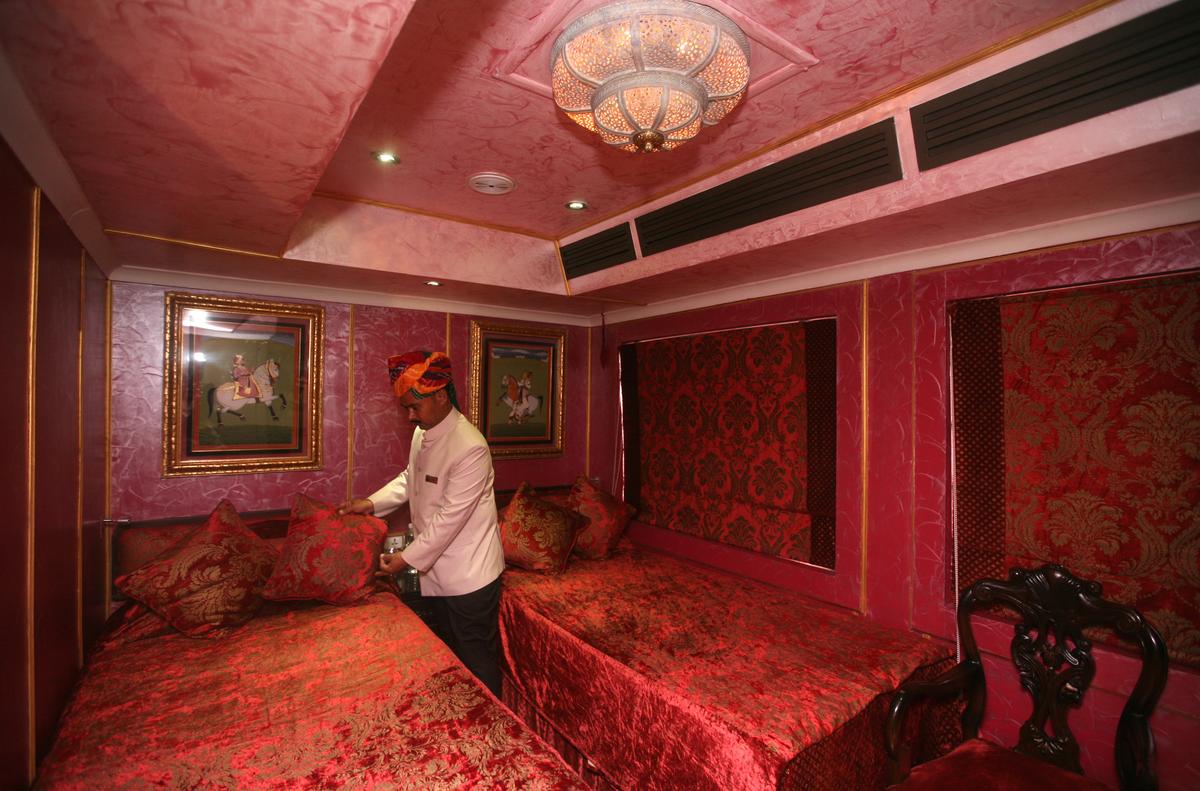
A bedroom on the Royal Rajasthan on Wheels
| Photo Credit:
Mail Today
“It marked a real shift,” says Vignesh, director, Tour Times, Chennai, a private tourist train operator offering itineraries across India,which now runs several Bharat Gaurav tours. “We focus on seamless, end-to-end travel. Passengers don’t lift a finger — luggage stays onboard, we handle everything else.” Tour Times, recognised by the Ministry of Tourism, has launched heritage circuits across the South and East, including the upcoming 11-day Coromandel Coastal Bliss Tour, which costs ₹26,700 per head. It departs on August 28, covering Kolkata, the Sundarbans, Bhubaneswar, Borra Caves, Araku Valley, and Visakhapatnam.
“The rain transforms the landscape. From your train window, temple towns, flooded fields, and mountain valleys blur past — it’s cinematic. That’s the magic,” says Vignesh.
Meanwhile, the North East Discovery itinerary, part of the Bharat Gaurav initiative, launched on April 22, becomes all the more compelling during the monsoon, when the lush landscapes of Assam, Arunachal Pradesh, Tripura, Nagaland, and Meghalaya come alive in their full glory. The 15-day, 5,800 kilometre luxury journey is operated aboard the Bharat Gaurav Deluxe AC Tourist Train, featuring air-conditioned coaches with showers, sensor-enabled washrooms, foot massagers, and two dining cars serving hot, freshly prepared meals. The per-person cost for this journey ranges from approximately ₹1.16 lakh for AC III class up to ₹1.67 lakh for AC I (Coupe) class. These prices cover train travel, hotel stays, meals, sightseeing, and other tour services. Part of the Government’s Ek Bharat Shreshtha Bharat and Dekho Apna Desh initiatives, the itinerary is designed to offer regional sightseeing, making it an ideal way to experience the cloud-draped hills and vibrant cultural life of the North East in the rainy season.
In a country where the monsoon is as much an emotion as it is a season, there is something grounding about slowing down to watch it unfurl from a train. The landscapes change, the light shifts, and so does something within you. And all it takes is a window seat.
Source link
[ad_3]
[ad_4]

